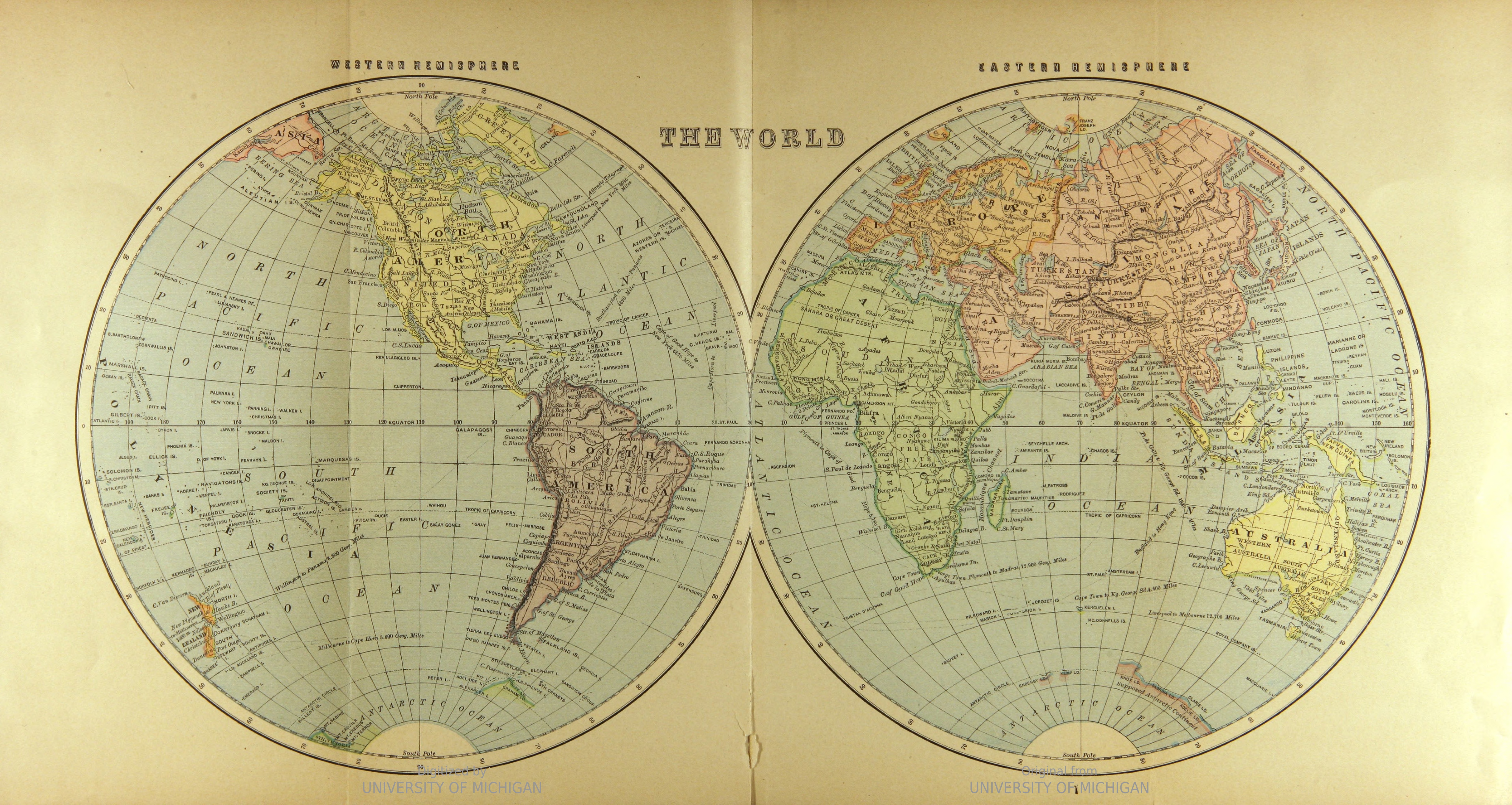Hemisphere of the Earth on:
[Wikipedia]
[Google]
[Amazon]

 Hemispheres of Earth in
Hemispheres of Earth in

 Hemispheres of Earth in
Hemispheres of Earth in geography
Geography (from Greek: , ''geographia''. Combination of Greek words ‘Geo’ (The Earth) and ‘Graphien’ (to describe), literally "earth description") is a field of science devoted to the study of the lands, features, inhabitants, an ...
and cartography
Cartography (; from grc, χάρτης , "papyrus, sheet of paper, map"; and , "write") is the study and practice of making and using maps. Combining science, aesthetics and technique, cartography builds on the premise that reality (or an i ...
, are any division of the globe into two hemispheres ().
Geographical Hemispheres
The primary hemispherical split geographically is made by latitudinal (north/south) andlongitudinal
Longitudinal is a geometric term of location which may refer to:
* Longitude
** Line of longitude, also called a meridian
* Longitudinal engine, an internal combustion engine in which the crankshaft is oriented along the long axis of the vehicl ...
(east-west) markers:
* North–South
** Northern Hemisphere, the half that lies north of the Equator
** Southern Hemisphere, the half that lies south of the Equator
* East–West
** Eastern Hemisphere, the half that lies east of the prime meridian
A prime meridian is an arbitrary meridian (a line of longitude) in a geographic coordinate system at which longitude is defined to be 0°. Together, a prime meridian and its anti-meridian (the 180th meridian in a 360°-system) form a great ...
and west of the 180th meridian
** Western Hemisphere
The Western Hemisphere is the half of the planet Earth that lies west of the prime meridian (which crosses Greenwich, London, United Kingdom) and east of the antimeridian. The other half is called the Eastern Hemisphere. Politically, the te ...
, the half that lies west of the prime meridian and east of the 180th meridian
Alternative Hemispheres
The East–West division can also be seen in a cultural and religious sense, as a division into two cultural and religious hemispheres. Some geographers prefer to split the hemispheres at 20° west and 160° east so thatAfrica
Africa is the world's second-largest and second-most populous continent, after Asia in both cases. At about 30.3 million km2 (11.7 million square miles) including adjacent islands, it covers 6% of Earth's total surface area ...
and Europe
Europe is a large peninsula conventionally considered a continent in its own right because of its great physical size and the weight of its history and traditions. Europe is also considered a subcontinent of Eurasia and it is located entirel ...
are not split.
However, other schemes have sought to divide the planet in a way that maximizes the preponderance of one geographic feature or another in each division:
* Land–Water
** Land Hemisphere, the hemisphere on Earth containing the largest possible area of land
** Water Hemisphere, the hemisphere on Earth containing the largest possible area of water
Earth may also be split into hemispheres of day and night
Night (also described as night time, unconventionally spelled as "nite") is the period of ambient darkness from sunset to sunrise during each 24-hour day, when the Sun is below the horizon. The exact time when night begins and ends depends ...
by the terrestrial terminator
Terminator may refer to:
Science and technology
Genetics
* Terminator (genetics), the end of a gene for transcription
* Terminator technology, proposed methods for restricting the use of genetically modified plants by causing second generation s ...
.
See also
*Antarctica
Antarctica () is Earth's southernmost and least-populated continent. Situated almost entirely south of the Antarctic Circle and surrounded by the Southern Ocean, it contains the geographic South Pole. Antarctica is the fifth-largest cont ...
** South Pole
The South Pole, also known as the Geographic South Pole, Terrestrial South Pole or 90th Parallel South, is one of the two points where Earth's axis of rotation intersects its surface. It is the southernmost point on Earth and lies antipod ...
* Arctic Ocean
The Arctic Ocean is the smallest and shallowest of the world's five major oceans. It spans an area of approximately and is known as the coldest of all the oceans. The International Hydrographic Organization (IHO) recognizes it as an ocean, a ...
** North Pole
The North Pole, also known as the Geographic North Pole or Terrestrial North Pole, is the point in the Northern Hemisphere where the Earth's rotation, Earth's axis of rotation meets its surface. It is called the True North Pole to distingu ...
* Earth's geographical centre
* Eastern Hemisphere
* Global North and Global South
The concept of Global North and Global South (or North–South divide in a global context) is used to describe a grouping of countries along socio-economic and political characteristics. The Global South is a term often used to identify region ...
* Land and water hemispheres
The land hemisphere and water hemisphere are the hemispheres of Earth containing the largest possible total areas of land and ocean, respectively. By definition (assuming that the entire surface can be classed as either "land" or "ocean"), the t ...
* Northern Hemisphere
* Southern Hemisphere
* Western Hemisphere
The Western Hemisphere is the half of the planet Earth that lies west of the prime meridian (which crosses Greenwich, London, United Kingdom) and east of the antimeridian. The other half is called the Eastern Hemisphere. Politically, the te ...
* East–West dichotomy
In sociology, the East–West dichotomy is the perceived difference between the Eastern and the Western worlds. Cultural and religious rather than geographical in division, the boundaries of East and West are not fixed, but vary according ...
References
External links
{{Hemispheres of the Earth Geography